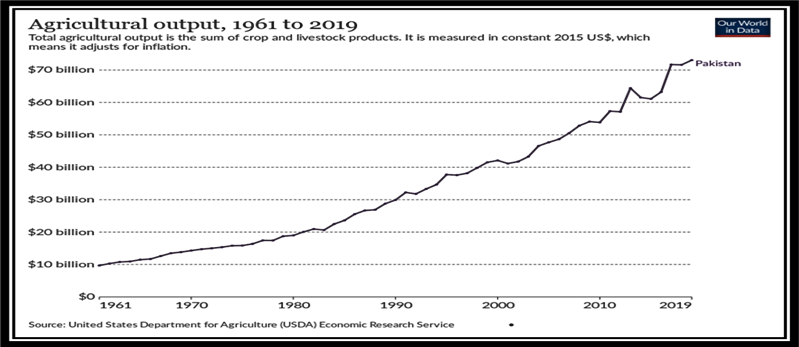IMPACTS OF GREEN REVOLUTION TECHNOLOGIES ON AGRICULTURAL DEVELOPMENT IN SINDH
DOI:
https://doi.org/10.71146/kjmr112Keywords:
Green Revolution, Agricultural Development, Economic Growth, Climate ChangeAbstract
The Green Revolution was the outcome of famous agro-scientist Norman Borlaug and his team’s successful development of new dwarf wheat in Mexico during the 1950s that turned within years the country self-sufficient in wheat. These verities were introduced in Pakistan and India in the 1960s and benefited double production within years. The Green Revolution was introduced when Pakistan was under dictatorship with a one-unit governance mechanism. West Pakistan provincial government was controlled from Lahore with a negligible number of officials from Sindh. The impacts of the Green Revolution were impressive and fruitful in Punjab as compared to Sindh. However, a less advantage was available to the farmers and growers for experiencing the advent of new technologies of green revolution. The impact of modified crops, mechanized agriculture and perennial system helped achieve betterment and development. This research is focused to analyzing the impacts of the Green Revolution on the agricultural development of Sindh and the positive and negative effects of pesticides, herbicides, fertilizers, contamination of water, salinity, water logging and climate change. There is a greater need to address the negative effects and strive for better productivity with sustainable planning and improvement for the future.
Downloads

Downloads
Published
Issue
Section
License
Copyright (c) 2024 Bakhtiar Ahmed, Mr. Abdul Rahim, Mr.Ghulam Mustafa Bozdar (Author)

This work is licensed under a Creative Commons Attribution 4.0 International License.






